Why are orcas attacking boats and sometimes sinking them?

After four years and hundreds of incidents, researchers remain puzzled why orcas, also known as killer whales, continue to ram boats – sinking a few of them – along the Iberian Peninsula. The most-recent incident was the sinking of a yacht on Oct. 31 in the Strait of Gibraltar.
The origin of these interactions remain a "great mystery," said Alfredo López, a University of Santiago biologist, but he does not believe the behavior is aggressive. Orcas are large dolphins, López said. And like dolphins, the events could stem from the orcas’ curious and playful behavior, such as trying to race the boats.
López, who specializes in orcas, and his team, Grupo de trabajo Orca Atlántica (GOTA) , have tracked these encounters since 2020. The team’s recent study theorizes the orcas could also be exhibiting cautionary behavior because of some previous traumatic incident.

Where have killer whales interacted with boats?
GOTA has tracked more than 350 interactions just on the Iberian Peninsula since 2020. Most have taken place along the Strait of Gibraltar, but the orcas’ mischief or self-defense may be spreading north. An incident was reported in June in the Shetland Islands in Scotland .
GOTA defines interactions as instances when orcas react to the presence of approaching boats, such as:
- Interaction without physical contact.
- Some physical contact without damage.
- Contact that causes serious damage that could prevent the navigation of the boat.
Recent incidents when orcas attacked boats and sank them
The Oct. 31 incident occurred in the Strait of Gibraltar where a pod of orcas sank a mid-size sailing yacht named the Grazie Mamma after a 45-minute interaction, Live Science reported .
On June 19 an orca rammed a 7-ton yacht multiple times off the Shetland Islands in Scotland, according to an account from retired Dutch physicist Dr. Wim Rutten in the Guardian.
"Killer whales are capable of traveling large distances, so it is not out of the ordinary that an animal could travel that far," said Tara Stevens, a marine scientist at CSA Ocean Sciences Inc. "To my knowledge, this data is not available, so we cannot confirm at this time if these are the same animals."
Including the Oct. 31 incident, orcas have sunk four boats this year. The previous sinking occured in May , off the coasts of Portugal and Spain, but whale expert Anne Gordon told USA TODAY in May that the incidents shouldn't heighten concerns about the whales.
"Yes, they're killer whales. And yes, their job is to be predators in the ocean, but in normal circumstances there is absolutely zero threat to humans in a boat," Gordon said .
Most of the interactions have involved sailboats, but fishing boats, semi-rigid boats and motorboats haven’t gone unscathed.
Are these the same killer whales attacking boats or unrelated incidents?
López hypothesizes that the interactions could be a self-induced behavior where you're "inventing something new and repeat it. This behavior coincides with the profile of the juveniles." He said it could also be response to an aversive situation: "One or several individuals had lived a bad experience and tried to stop the boat so as not to repeat it. This behavior coincides with the profile of adults."
"Fifteen different orcas from at least three different communities" have been identified, López said. And they are probably teaching the habit to others, or the others are mimicking the behavior. "Without a doubt orcas learn by imitation," López said. The majority of the culprits are juveniles that touch, push and sometimes turn the vessels. He noted that adult males don't appear to be involved.
"Killer whales are incredibly intelligent animals that do learn behaviors from observation of other individuals," Stevens said. "Typically, very unique behaviors such as this are learned 'within' group, meaning individuals of the group may learn from each other and participate, but that does not necessarily mean that the behavior is shared outside the group with other individuals."
Which pods of killer whales are battering the boats?
Orcas operate in a social structure called a pod. These pods generally are a group of several generations of related orcas. Hierarchies are established within them, and they communicate and learn from one another, the study reads.
GOTA researchers have identified the individuals responsible for the interactions . One large pod is made up of three generations. It starts with grandmother Gladis Lamari, her daughter, grandchildren and a few other relatives.
Another pod comprises siblings Gladis Negra and Gladis Peque. Both have been photographed interacting with boats. Their mother, Gladis Herbille, has generally just watched her children at a distance from the boats, the study said.
A third group in the study are siblings and a cousin.
Orcas often tracking bluefin tuna
The movements of orcas depend on the location of their main food source, bluefin tuna. The migratory movements of tuna are very dynamic and predicting exactly where interactions will take place is very difficult, the report said. According to NOAA , Atlantic bluefin tuna are the largest in the tuna family and can reach a length of 13 feet and up to 2,000 pounds. They are a highly migratory species and can migrate thousands of miles across an entire ocean.
About the Iberian orcas
While they are called killer whales, orcas are actually the largest member of the dolphin family. This aquatic marine mammal family includes whales, dolphins and porpoises.
The Iberian orca is a subpopulation of the Atlantic orca population. These orcas are from the Strait of Gibraltar and the Gulf of Cádiz. Iberian orcas are small: 16 to 21 feet compared with Atlantic orcas that measure almost 30 feet.
Orcas in general are fast, reaching speeds up to 27.6 mph. By comparison, a 39-foot sailboat travels at about 9.2 mph.
What should you do if your boat is attacked by killer whales
The study recommended these tips to reduce the duration and intensity of the interaction.
- Stop the boat.
- Leave the rudder loose.
- Radio for help.
According to the GOTA study, most of the vessels involved in interactions are medium-sized (less than 49 feet) sailboats, with a paddle rudder, sailing at an average of 6.9 mph, under both sail and motor.
The interactions have been mostly concentrated in the spring and summer months and have been concentrated in the midday hours. They've lasted on average for 40 minutes, but several last less than 30 minutes.
Types of rudders Iberian orcas have approached
"It is very common for dolphins to interact with the boats and approach," López said. "Before 2020, the orcas did it with frequency but they weren't classified as attacks. Now, sometimes they touch the boat and the encounter is unfairly classified as an attack. They judge socially before understanding what (orcas) do."
Why are killer whales going ‘Moby-Dick’ on yachts lately? Experts doubt it’s revenge
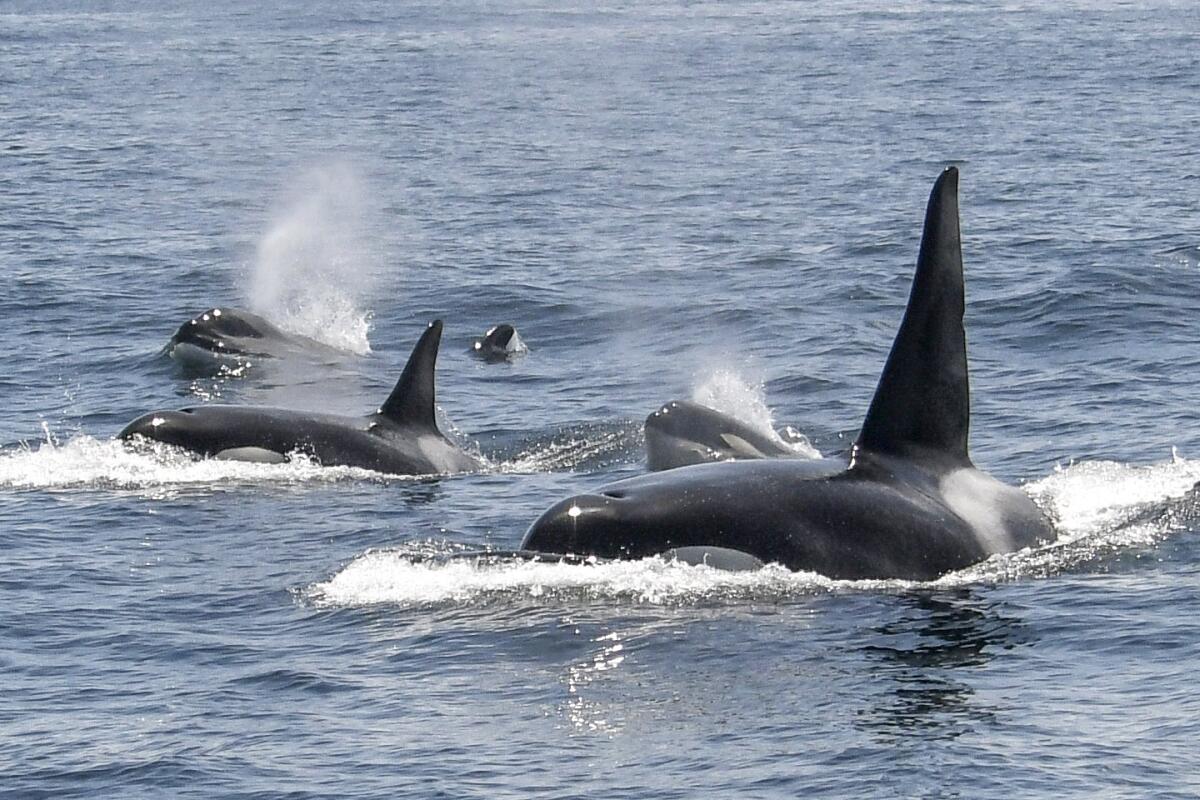
- Show more sharing options
- Copy Link URL Copied!
The attacks started suddenly and inexplicably in the spring of 2020 — pods of endangered killer whales began ramming yachts and fishing boats in European waters, pushing some off course and imperiling others.
Since then, there have been more than 500 reports of orca encounters off the Iberian Peninsula, the most recent occurring Thursday when a trio of whales rubbed against and bumped a racing sloop in the Strait of Gibraltar.
In most cases, the financial and structural damage has ranged from minimal to moderate: Boats have been spun and pushed, and rudders have been smashed and destroyed. Three vessels have been so badly mauled, they’ve sunk.
As the encounters continue, shaky video captured by thrilled and fearful seafarers has ignited a global internet sensation, while experts have struggled to explain the behavior and its timing. The seemingly militant whales have also won over a legion of adoring fans — many transfixed by the notion that the mammals are targeting rich people and exacting revenge for all the wrongs humanity has waged on their species and their ocean home.

Two dozen killer whales spotted celebrating a hunt off the San Francisco coast
The unusually large group spotted near the Farallon Islands was possibly a meeting of six or seven families.
June 7, 2023
Others wonder if the unusually large pods of multi-ton cetaceans now appearing off the coasts of San Francisco , Monterey and Nantucket, Mass., may soon follow suit.
Despite such rampant speculation on social media, most killer whale scientists have offered a very different interpretation. The Moby-Dick “revenge” narrative for the behavior is highly unlikely, they say.
“That just doesn’t sit right with me,” said Deborah Giles, an orca researcher at the University of Washington in Seattle and director of Wild Orca, a Washington-based conservation research organization.
She noted that despite the long history of orcas being hunted by whalers — and more recently marine parks — these top ocean predators have typically demonstrated a lack of aggression toward humans. There are no verified instances of orcas killing humans in the wild. The only deaths have occurred in marine parks and aquariums, where animals taken from the wild and forced to perform for humans in small tanks have attacked their trainers.
“So, I just don’t really see it as an agonistic activity; I just don’t see it going down like that,” said Giles, who has studied killer whales in the Pacific Ocean, Puget Sound and the Salish Sea for nearly 20 years.
Instead, she thinks the animals are engaging with boats because the vessels are “either making an interesting vibration or sound, or maybe it’s the way the water moves past the keels that is intriguing to these animals.”
The scientific literature is rife with anecdotes and research showing high cognition, playfulness and sociality in the species known as Orcinus orca — and examples of what appear to be the cultural transmission of new behaviors, either via teaching or observation.
In 1987, a female orca in the Pacific waters off North America was spotted sporting a dead salmon on her head. Within weeks, individuals in two other pods also began wearing fish hats. The trend lasted a few months and fizzled out within a year.
In South Africa, the killing of white sharks appears to be growing in popularity among a resident group of killer whales in the waters near Cape Town; Giles has watched a local trend of “phocoenacide” — porpoise killing — grow among a group of whales off the San Juan Islands.
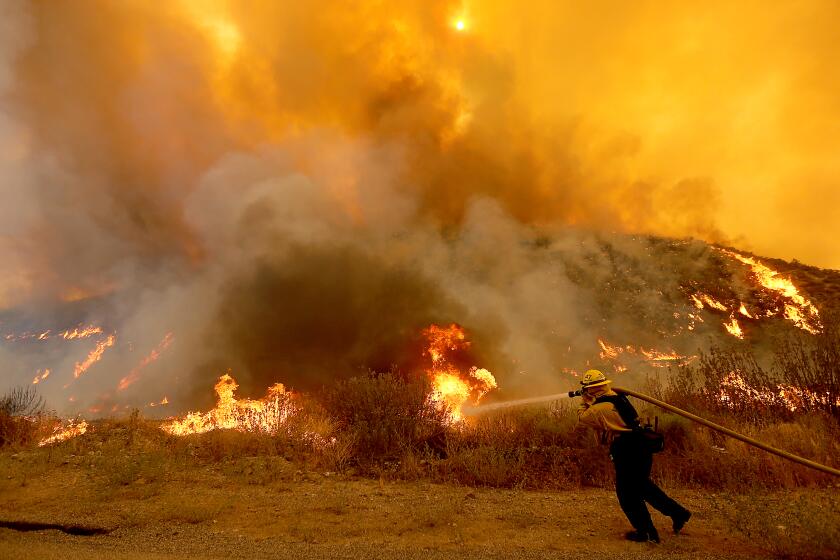
Wildfire burn areas in California are growing ever larger due to greenhouse gas emissions
Between 1996 and 2020, wildfire burn areas in California grew five times larger than in the 25 years prior. Scientists say climate change is to blame.
June 14, 2023
In both cases, the behavior does not appear to be for the purpose of feeding, Giles said. The orcas do not eat the dead animals. For instance, in the case of the porpoises, the killer whales played with them — bandying them about, sometimes surfing with them, other times carrying them on the orcas’ pectoral fins — until the porpoises drowned, at which point they were abandoned, she said.
“Fads” are not unique to orcas. Other animals, including primates and other cetaceans, have also been observed to adopt new behaviors, which then spread through a social group.
Susan Perry, a biological anthropologist at UCLA, has studied a population of capuchin monkeys in Costa Rica, where she has observed and demonstrated the cultural transmission of novel behaviors, including “eye poking” — in which one monkey slips its finger “knuckle deep” between the eyelid and the bottom of another monkey’s eyeball.
But the idea that the whales’ behavior is a response to trauma has gripped many — including the researchers who most closely study this population and first documented the behavior.
In a paper published last year , a team of Portuguese and Spanish researchers suggested the behavior seen in the Strait of Gibraltar orcas could have been triggered by a variety of causes, including trauma.
Alfredo López Fernandez, a killer whale researcher with GT Orca Atlántica, a Portuguese conservation research organization, said it is impossible to know how it started, or which whale or whales may have initially instigated the attacks.
He listed several adult females as the possible original perpetrators — which then taught or showed others how to participate.
There is White Gladis, which seems to be present in most of the attacks; Gladis Negra, which was observed to have injuries in 2020, possibly from a ship strike; and Gray Gladis, which in 2018 witnessed another whale get trapped in fishing gear.
Gladis is a name given to all orcas in the pod that interact with boats; it comes from Orca gladiator, an early nickname given to these boat-jouncing killer whales.
“All of this has to make us reflect on the fact that human activities, even in an indirect way, are the origin of this behavior,” he said.
For Cal Currier’s part, he thinks the whales are entertaining themselves.

Climate & Environment
Bay Area refinery fallout does not pose significant health risk, authorities say
Nearly six months after Martinez Refining Co. released hazardous materials, officials have announced reassuring soil test results.
June 9, 2023
On June 8, as the 17-year-old Palo Alto High School senior sailed through the strait with his father, James, 55, and brother, West, 19, their 30-foot sailboat was accosted and spun in circles.
The rudder was battered, and the trio had to be towed to shore in Spain. “They were playing,” Currier said.
He said that when they pulled in, they were told roughly 30 other boats were ahead of them in line for repairs; half were damaged by the killer whales. He said there were no bite marks on the rudder, and he did not sense aggression from the whales.
For Giles, the Washington killer whale researcher, her biggest concern is that the longer the whales continue this behavior, the more likely it is they’ll get injured or suffer retribution at the hands of humans.
She’s hoping authorities in the region will consider non-traumatic hazing techniques — such as instructing boats to play or make sounds that irritate the whales — to get them to stop. She said studies have shown orcas don’t like the calls of pilot whales and will generally swim away if they hear them. Loud banging sounds, such as hitting a large, metal oikomi pipe underwater, can also be effective.
“Anything that might irritate them, make them lose their interest or swim away,” Giles said.
Currier said he wasn’t too rattled by the whole experience — unlike his dad and brother, who were “scared for their lives.”
The trio have since sold the boat and intend to spend the rest of the vacation on dry land.
More to Read

Killer whales are killer whales, right? It might be a lot more complicated than that
March 29, 2024

Starvation has decimated gray whales off the Pacific Coast. Can the giants ever recover?
March 27, 2024
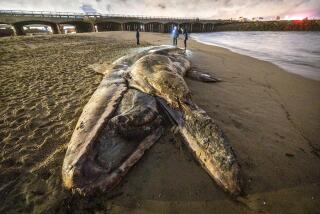
The gray whale die-off on West Coast is over, NOAA declares
March 19, 2024

Susanne Rust is an award-winning investigative reporter specializing in environmental issues. She is based in the Bay Area.
More From the Los Angeles Times

As salmon are released into the Klamath River, tribal leaders see a ‘symbol of hope’
April 21, 2024

Avian flu outbreak raises a disturbing question: Is our food system built on poop?
April 18, 2024

‘Scammed on the worst day of my life’: Pet owners say cremation service took their money, ghosted them

‘Nobody saw this coming’; California dairies scramble to guard herds against bird flu
April 14, 2024
May 24, 2023
Why Has a Group of Orcas Suddenly Started Attacking Boats?
Killer whales in a group near Spain and Portugal may be teaching one another to mess with small boats. They sank their third vessel earlier this month
By Stephanie Pappas
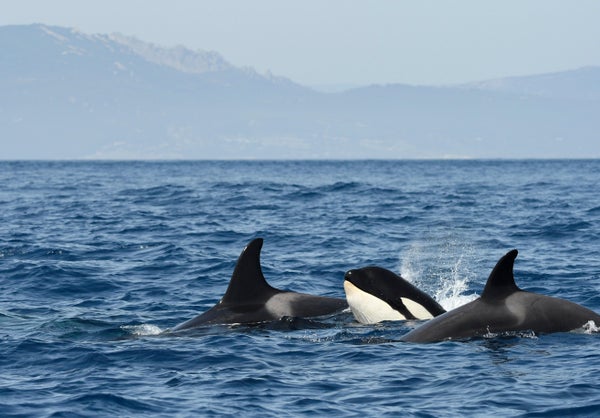
A group of three orcas, also known as killer whales, are seen swimming in the Strait of Gibraltar. Individuals in the critically endangered subpopulation have been attacking boats off the coast of the Iberian Peninsula.
Malcolm Schuyl/Alamy Stock Photo
A trio of orcas attacked a boat in the Strait of Gibraltar earlier this month, damaging it so badly that it sank soon afterward.
The May 4 incident was the third time killer whales ( Orcinus orca ) have sunk a vessel off the coasts of Portugal and Spain in the past three years. The subpopulation of orcas in this region began harassing boats, most often by biting at their rudder, in 2020. Almost 20 percent of these attacks caused enough damage to disable the vessels, says Alfredo López, an orca researcher at the Atlantic Orca Working Group (GTOA), which monitors the Iberian killer whale population. “It is a rare behavior that has only been detected in this part of the world,” he says.
Researchers aren’t sure why the orcas are going after the watercraft. There are two hypotheses, according to López. One is that the killer whales have invented a new fad, something that subpopulations of these members of the dolphin family are known to do. Much as in humans, orca fads are often spearheaded by juveniles, López says. Alternatively, the attacks may be a response to a bad past experience involving a boat.
On supporting science journalism
If you're enjoying this article, consider supporting our award-winning journalism by subscribing . By purchasing a subscription you are helping to ensure the future of impactful stories about the discoveries and ideas shaping our world today.
The first known incident occurred in May 2020 in the Strait of Gibraltar, an area with heavy boat traffic. Since then GTOA has recorded 505 cases of orcas reacting to boats. Sometimes they simply approached the vessels, and only a fraction of cases involved physical contact, López says. In a study published in June 2022 in Marine Mammal Science , he and his colleagues cataloged 49 instances of orca-boat contact in 2020 alone. The vast majority of the attacks were on sailboats or catamarans, with a handful involving fishing boats and motorboats. The average length of the vessels was 12 meters (39 feet). For comparison, a full-grown orca can be 9.2 meters (30 feet) long.
The researchers found that the orcas preferentially attack the boats’ rudder, sometimes scraping the hull with their teeth. Such attacks often snap the rudder, leaving the boat unable to navigate. In three cases, the animals damaged a boat so badly that it sank: In July 2022 they sank a sailboat with five people onboard. In November 2022 they caused a sailboat carrying four to go down. And finally, in this month’s attack, the Swiss sailing yacht Champagne had to be abandoned, and the vessel sank while it was towed to shore. In all cases, the people onboard were rescued safely.
In 2020 researchers observed nine different individual killer whales attacking boats; it’s unclear if others have since joined in. The attacks tended to come from two separate groups: a trio of juveniles occasionally joined by a fourth and a mixed-aged group consisting of an adult female named White Gladis, two of her young offspring and two of her sisters. Because White Gladis was the only adult involved in the initial incidents, the researchers speculate that she may have become entangled in a fishing line at some point, giving her a bad association with boats. Other adult orcas in the region have injuries consistent with boat collisions or entanglement, López says. “All this has to make us reflect on the fact that human activities, even in an indirect way, are at the origin of this behavior,” he says.
The safe rescue of everyone involved, however, suggests to Deborah Giles that these orcas don’t have malevolent motivations against humans. Giles, science and research director of the Washington State–based nonprofit conservation organization Wild Orca, points out that humans relentlessly harassed killer whales off the coasts of Washington and Oregon in the 1960s and 1970s, capturing young orcas and taking them away for display at marine parks. “These are animals that, every single one of them, had been captured at one point or another—most whales multiple times. And these are whales that saw their babies being taken away from them and put on trucks and driven away, never to be seen again,” Giles says. “And yet these whales never attacked boats, never attacked humans.”
Though it’s possible that the orcas around the Iberian Peninsula could be reacting to a bad experience with a boat, Giles says, it’s pure speculation to attribute that motivation to the animals. The behavior does seem to be learned, she says, but could simply be a fad without much rhyme or reason—to the human mind, anyway. Famously, some members of the Southern Resident orcas that cruise Washington’s Puget Sound each summer and fall spent the summer of 1987 wearing dead salmon on their head. There was no apparent reason for salmon hats to come in vogue in orca circles, but the behavior spread and persisted for a few months before disappearing again. “We’re not going to know what’s happening with this population,” Giles says, referring to the Iberian orcas.
The Iberian orca attacks typically last less than 30 minutes, but they can sometimes go on for up to two hours, according to the 2022 study. In the case of the Champagne, two juvenile killer whales went after the rudder while an adult repeatedly rammed the boat, crew members told the German magazine Yacht . The attack lasted 90 minutes.
The Iberian orca subpopulation is considered critically endangered, with only 39 animals the last time a full census was conducted in 2011. A 2014 study found that this subpopulation follows the migration of their key prey , Atlantic bluefin tuna—a route that puts them in close contact with human fishing, military activities and recreational boating. Maritime authorities recommend that boaters in the area slow down and try to stay away from orcas, López says, but there is no guaranteed way to avoid the animals. He and his colleagues fear the boat attacks will come back and bite the orcas, either because boaters will lash out or because the attacks are dangerous to the animals themselves. “They run a great risk of getting hurt,” López says.
- Share full article
Advertisement
Supported by
Orcas Sink Fourth Boat Off Iberia, Unnerving Sailors
Orcas caused enough damage to sink a yacht in the Strait of Gibraltar last week. A small pod has been slamming boats in recent years, worrying skippers charting routes closer to shore.

By Isabella Kwai
The yacht Grazie Mamma II carried its crew along the coastlines and archipelagos of the Mediterranean. Its last adventure was off the coast of Morocco last week, when it encountered a pod of orcas.
The marine animals slammed the yacht’s rudder for 45 minutes, causing major damage and a leak, according to Morskie Mile , the boat’s Polish operators. The crew escaped, and rescuers and the Moroccan Navy tried to tow the yacht to safety, but it sank near the port of Tanger Med, the operator said on its website.
The account of the sinking is adding to the worries of many sailors along the western coast of the Iberian Peninsula, where marine biologists are studying a puzzling phenomenon: Orcas are jostling and ramming boats in interactions that have disrupted dozens of voyages and caused at least four boats in the past two years to sink.
The largest of the dolphin family, orcas are playful apex predators that hunt sharks, whales and other prey but are generally amiable to humans in the wild . The orcas hunting in the Strait of Gibraltar are considered to be endangered , and researchers have noticed an upsurge of unusual behavior since 2020: A small group of the marine animals have been battering boats in the busy routes around Portugal, Spain and Morocco.
While most interactions occur in the waters of southwestern Europe and North Africa, an orca also reportedly rammed a yacht some 2,000 miles north off the coast of Scotland, according to The Guardian.
“Orcas are complex, intelligent, highly social,” Erich Hoyt, a research fellow at Whale and Dolphin Conservation and author of “Orca: The Whale Called Killer,” said. “We’re still at the early stages of trying to understand this behavior.”
Researchers have pushed back at the idea that orcas are attacking vessels. Instead, they theorize that the rudders of boats have become a plaything for curious young orcas and that the behavior has become a learned fad spreading through the population. Another hypothesis, according to biologists who published a study on the population last June, is that the ramming is an “adverse behavior” because of a bad experience between an orca and a boat — though researchers tend to favor the first.
It is unclear what will stop the ramming, whether it’s playful or otherwise, a point that has left anxious skippers traveling these parts sharing advice in Facebook groups dedicated to tracking such interactions .
“It’s been an interesting summer hiding in shallow waters,” said Greg Blackburn, a skipper based in Gibraltar. Orcas slammed into a boat he was commanding in May and chewed at the rudder, he said, though the vessel was able to return to shore.
The encounter left an impression: On a recent trip to Barcelona, Mr. Blackburn had to pass through a patch where orcas had been sighted the week before. “I genuinely felt sick for about three hours,” he said, “just watching the horizon constantly for a fin to pop up.”
Conservationists, maritime rescue groups and yacht clubs are partnering to navigate the challenge of preserving an endangered population and helping sailors avoid calamity. The Cruising Association, a club supporting sailors, has recommended safety protocols for orca encounters, such as disconnecting the boat’s autopilot and staying quiet. Skippers have offered one another anecdotal advice to deter attacks, including throwing sand into the water and banging loudly on the boat.
Before leaving shore, seagoers can also consult digital platforms that now track reported orca sightings and interactions in the region. This can help them avoid the animals, or chart a route closer to shore, said Bruno Díaz López, a biologist and the director of the Bottlenose Dolphin Research Institute based in Galicia, Spain.
“We suggested the boats stay in shallow waters,” he said, adding that they had noticed more boats changing their journeys. “Maybe the trip takes longer, yes. But it is worth it.”
Mr. Blackburn, the skipper, said he had heard of people resorting to throwing firecrackers into the sea to try to scare the animals away, adding that the boats served as people’s homes on the ocean. “At the end of the day, if you’re protecting your home what are you going to do?”
But the ocean is the orcas’ home, and conservationists say scaring the animals is not a solution.
“It is not about winning a battle, because this is not a war,” Mr. López said. “We need to be respectful.”
Isabella Kwai is a breaking news reporter in the London bureau. She joined The Times in 2017 as part of the Australia bureau. More about Isabella Kwai
Thank you for visiting nature.com. You are using a browser version with limited support for CSS. To obtain the best experience, we recommend you use a more up to date browser (or turn off compatibility mode in Internet Explorer). In the meantime, to ensure continued support, we are displaying the site without styles and JavaScript.
- View all journals
- Explore content
- About the journal
- Publish with us
- Sign up for alerts
- NATURE BRIEFING
- 24 May 2023
Daily briefing: Why orcas are attacking boats in Spain
- Flora Graham
You can also search for this author in PubMed Google Scholar
Hello Nature readers, would you like to get this Briefing in your inbox free every day? Sign up here .
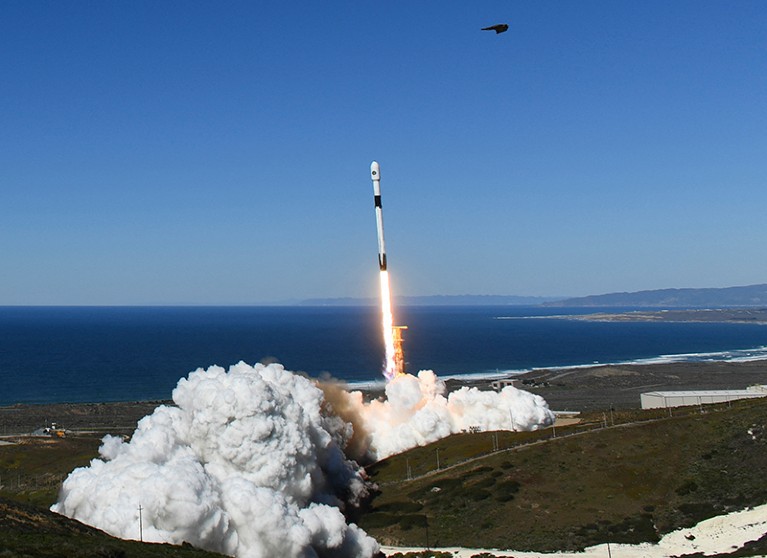
A bird takes flight as the private spaceflight firm SpaceX launches a rocket from Vandenberg US Space Force Base in Lompoc, California. Credit: Patrick T. Fallon/AFP Via Getty
How rocket launches impact wildlife
Scientists will, for the first time, assess whether the thunderous noise of rocket launches harms endangered animals that live around California’s Vandenberg Space Force Base, one of the world’s busiest spaceports. Chronic noise pollution — from cities or car or boat traffic, for example — is known to increase animals’ stress levels. Over the next three years, cameras and audio monitors will capture whether creatures change their behaviour, such as birds abandoning their nests or altering their songs, in response to the extremely loud launches. The number of yearly launches at Vandenberg is set to rise from 5—15 to up to 100 by 2030.
Nature | 6 min read
Game-changing obesity treatments
Anti-obesity medications that mimic the hormone GLP-1 — semaglutide (sold under the brand names Ozempic, Wegovy and Rybelsus) and tirzepatide (Mounjaro) — are proving shockingly effective at causing weight loss. Now, health-care providers are getting to grips with how to best use them . This includes categorizing obesity to identify who is likely to benefit the most from the drugs, studying how long people will have to stay on them and fine-tuning doses to avoid downsides, such as muscle loss.
Nature | 5 min read
Why orcas are attacking boats in Spain
Orcas ( Orcinus orca ) have sunk three boats off the Iberian coast of Europe , and the behaviour seems to be spreading. Biologists first noted the trend in 2020. They suspect that it is a defensive behaviour, which originated with a female orca nicknamed White Gladis after it experienced an unknown trauma. Iberian orcas are critically endangered, and only 39 were recorded in the last census, in 2011.
LiveScience | 6 min read
Reference: Marine Mammal Science paper
Features & opinion
The mental-health crisis gripping science.
Researchers at all career stages and across the world are experiencing bullying and discrimination, anxiety and depression, financial stress and poor work–life balance. Large studies have provided hard data on how dire the situation is , particularly for members of under-represented groups. What exactly needs to change is far from clear. Many scientists agree that talking about mental health has to become normal. There are programmes that tackle equity issues, and unions are pushing for better working conditions. Others argue that academia needs larger, systemic changes, including zero tolerance for abuse, and drastic changes to funding structures. “This really is a problem that could potentially affect the future of science if we can’t retain young talent,” says sociologist Brandon Vaidyanathan.
Nature | 11 min read
How to start a quantum-sensor revolution
Quantum sensors, which exploit the fundamental properties of atoms and light to make extremely precise measurements of the world, could revolutionize brain imaging, remote imaging and navigation. “Many people — including business leaders — think quantum technologies are devices of the future, not the present,” write a group of quantum researchers who are hoping to change that. They lay out five priorities for commercializing quantum sensors , including making them more robust and integrating them into existing systems. And unlike quantum computers, which might be decades away from being better than classical computers, quantum sensors are already used in the laboratory and are ready to be adopted more widely.
Nature | 12 min read
The IPCC needs its own net-zero target
The United Nations Intergovernmental Panel on Climate Change (IPCC) should practise what it preaches and aggressively limit its own emissions , argues climate scientist Benjamin Sanderson. Replacing in-person meetings, and the requisite long-haul flights, could drastically cut its carbon footprint while decreasing demographic and social barriers to attending. “IPCC members should remember that nobody is better placed to demonstrate how to eliminate emissions,” Sanderson says.
Image of the week
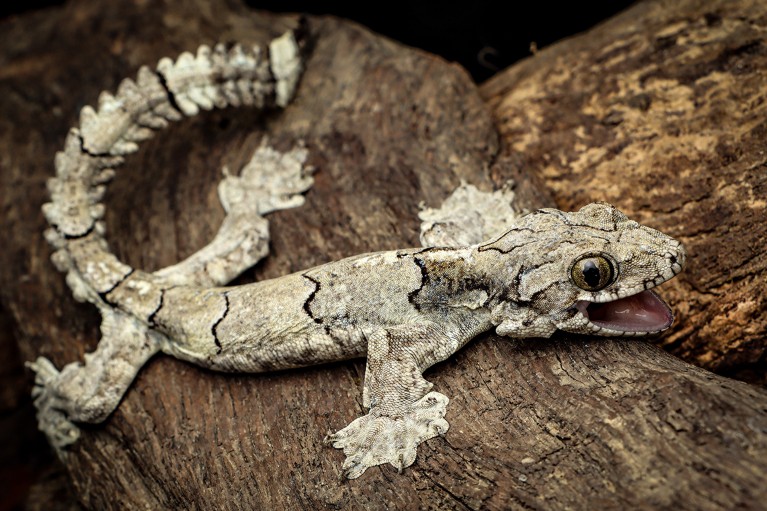
Credit: Lal Muansanga
This stunning creature is a Gekko mizoramensis , a parachute gecko species that’s new to science . Parachute geckos use skin flaps along their bodies, limbs and tails to glide from tree to tree. Discovered by biologists in northeastern India, the gecko is proof that animal and plant life in the region remain poorly documented. ( Nature | 2 min read )
Quote of the day
“it’s a lifeline for folks to receive information and to really see that they are not alone.”.
Public-health researcher Jessica Fish notes that teenagers from sexual and gender minorities are one group that sees a net benefit from social media, following the US surgeon general’s warning on Tuesday that the platforms present a “profound risk of harm” to adolescent mental health. ( The New York Times | 4 min read )
doi: https://doi.org/10.1038/d41586-023-01754-y
Today I’m thinking of poet Amanda Gorman, who dazzled at the last US presidential inauguration with her poem ‘ The Hill We Climb ’. She has also written about climate change in the inspirational ‘Earthrise’ , which was named for the iconic photo taken from lunar orbit by astronaut William Anders. “Being able to communicate, not just the science and the facts,” said Gorman in 2019 , “but also the artistry and the humanity — it gets to people in a way that I think is unique, to try to get people not to feel scared but to feel prepared to become agents of change.”
Thank you to readers as you continue to send me your favourite science-related poems. Your e-mails are always welcome at [email protected] .
Thanks for reading,
Flora Graham, senior editor, Nature Briefing
With contributions by Katrina Krämer
Related Articles
Daily briefing: Brain implants reveal first view of chronic pain
Daily briefing: What 1.5 ℃ of global warming really means
Daily briefing: What Thailand’s election of a radical new government means for science
Daily briefing: Human evolution has no single birthplace
2024 Recruitment notice Shenzhen Institute of Synthetic Biology: Shenzhen, China
The wide-ranging expertise drawing from technical, engineering or science professions...
Shenzhen,China
Shenzhen Institute of Synthetic Biology
Recruitment of Global Talent at the Institute of Zoology, Chinese Academy of Sciences (IOZ, CAS)
The Institute of Zoology (IOZ), Chinese Academy of Sciences (CAS), is seeking global talents around the world.
Beijing, China
Institute of Zoology, Chinese Academy of Sciences (IOZ, CAS)

Research Associate - Brain Cancer
Houston, Texas (US)
Baylor College of Medicine (BCM)
Senior Manager, Animal Care
Research associate - genomics.
Sign up for the Nature Briefing newsletter — what matters in science, free to your inbox daily.
Quick links
- Explore articles by subject
- Guide to authors
- Editorial policies
Revenge of the orcas? Killer whales have sunk 3 boats in unusual attacks.

A spate of encounters between orcas and boats off the Iberian coast has puzzled scientists and sailors recently, as seemingly coordinated ambushes by the killer whales led to the sinking of three vessels. The reason for the attacks, according to one scientist who has studied the phenomenon, may be revenge.
The leading theory is that a female orca suffered a traumatic incident with a boat — a “critical moment of agony” — that caused her to start attacking the vessels, Alfredo López Fernandez, a marine biologist at the University of Aveiro in Portugal, told the industry publication Live Science.
The majority of the “disruptive” interactions between orcas and boats off the Iberian Peninsula in the past few years — López Fernandez said they numbered in the hundreds — have been brief and caused minimal physical damage to the vessels, according to a report co-written by López Fernandez and published in the journal Marine Mammal Science. But on at least three occasions, including one incident this month involving a sailing yacht, the orcas have sunk the boats.
Orca vs. shark: Rare drone footage shows killer whales mauling great whites
The female orca, whom scientists named White Gladis, appears to have taught the aggressive behavior to other adult orcas, whose children have begun imitating the behavior, López Fernandez said.
In most of the interactions, the orcas strike the rudder or hull, the underbody, of the boat, according to the report, which included interviews with sailors and other witnesses to the phenomenon.
Aside from “some punctual aversive incident” that may have triggered the attacks, the report said they may be caused by factors like loss of prey or disturbances by boats. Otherwise, the report said, it may just be because of the killer whales’ “natural curiosity.”
Orcas are known to be extremely intelligent and capable of teaching one another certain behaviors, including actions that could be interpreted as violent. One episode in 2016 involving an orca drowning another’s calf left scientists “horrified” as they described a “first of its kind” observation of orcas carrying out infanticide , which has been documented in other species.
‘Fascinated and horrified’ scientists watched as a killer whale drowned another orca’s calf
Another report published in Marine Mammal Science documented orcas attacking, killing and then eating blue whales. Jeremy Goldbogen, a biologist who studies whales at Stanford University, told Stanford News the coordinated killings were “arguably one of the most dramatic and intense predator-prey interactions on the planet.” The phenomenon “astounded” scientists, one marine biologist told the New York Times.
So what should be made of the coordinated attacks on boats? The report warned that if the situation “continues or intensifies, it could become a real concern” for the safety of sailors, but also for the orcas, which are endangered in the region, because they could harm themselves by attacking the boats or be harmed by sailors trying to protect their vessels.

Orcas’ latest boat attack claims yacht sailing in Strait of Gibraltar
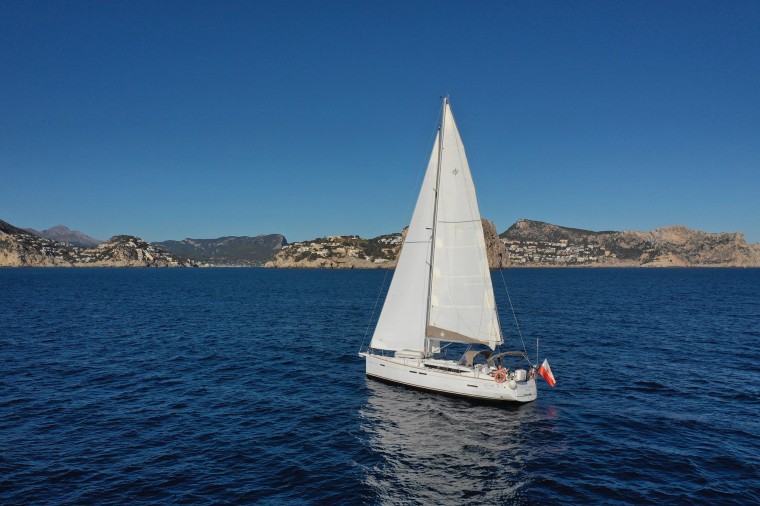
A yacht sank after it was attacked by a pod of orcas for 45 minutes, a sailing company has said, marking the latest assault on a boat by the sea mammals this year.
Polish tour operator Morskie Mile — which means "sea miles" — said in a Facebook post that its yacht Grazie Mamma II was attacked while sailing the Strait of Gibraltar between Spain and Morocco on Oct. 31.
The whales attacked the boat's rudder, the company said, causing major damage and a leak. Despite an attempt by the captain to take the boat to the nearest port, and a rescue attempt that involved the Moroccan Navy, the yacht sank near the entrance to the port of Tanger Med, about an hour's drive east of the city of Tangiers.
The boat's crew were unharmed, the company said in a statement that NBC News translated from Polish. The same statement was posted to the company's website by company owner Lech Lewandowski.
"For us, this yacht was everything that was great about sea sailing," he said.
"Long-term friendships were formed onboard. We sailed this yacht through the most beautiful places in Europe and the Atlantic archipelagos, trained numerous yacht helmsmen, discovered the beautiful and unknown, tasted Mediterranean specialties and sailed, sailed, sailed," Lewandowski continued.
The company said it was planning to honor forthcoming cruise bookings by using "friends' yachts." Future trips will take in the Baltic Sea, Norway, Italy and the Canary Islands, according to the company's website. A single leg of a voyage can cost 1,800 Polish zloty ($432).
In May, it emerged that orcas were responsible for attacking and sinking three boats in southern Europe. Encounters between orcas and humans have been increasing since 2020, researchers say , but no human deaths have been reported.
The increased orca-boat activity has led to a slew of internet memes this year, with some claiming they were joining the "orca wars" on the side of the orcas.
In September, a Russian boat on a round-the-world trip was sunk after a prolonged attack by tiny cookiecutter sharks.
Patrick Smith is a London-based editor and reporter for NBC News Digital.
- Skip to main content
- Keyboard shortcuts for audio player
A pod of orcas has sunk a yacht in the Strait of Gibraltar
Ayana Archie

A pair of orcas swim off the west coast of Vancouver Island in 2018. Brian Gisborne/AP hide caption
A pair of orcas swim off the west coast of Vancouver Island in 2018.
For 45 minutes, the crew of the Grazie Mamma felt like they were under attack from below. A pod of orcas had zeroed in on the yacht's rudder as it made its way through the Strait of Gibraltar last week, and rammed it repeatedly, "causing major damage and leakage," according to the company that operated the boat.
Rescuers were able to save the crew and return them safely to port in Tanger-Med on the coast of Morocco. Their vessel, though, sank into the sea.
"This yacht was the most wonderful thing in maritime sailing for all of us," read a statement posted to Facebook by Morskie Mile , the Warsaw-based touring company that operated the boat. "Very good memories will be transferred to Grazie Mamma II. Love of the sea always wins and friendships remain with us."
The company said it is working to ensure its upcoming trips to the Canary Islands go on without a hitch.
Last week's incident was the latest in a string of recent "attacks" by orcas in the waters separating southern Europe and northern Africa — encounters that have left researchers scratching their heads.

Killer whales are 'attacking' sailboats near Europe's coast. Scientists don't know why
Since 2020, there have been about 500 encounters between orcas and boats, Alfredo López Fernandez, a coauthor of a 2022 study in the journal Marine Mammal Science, told NPR earlier this year. At least three boats have sunk, though there is no record of an orca killing a human in the wild.
Scientists have been trying to pinpoint the cause of the behavior.
One theory among researchers is they're just playing around. Other researchers say it may be that the whales like the feel of the rudder.
"What we think is that they're asking to have the propeller in the face," said Renaud de Stephanis, president and coordinator at CIRCE Conservación Information and Research in Spain, in an interview with NPR last year. When they encounter a sailboat without its engine on, "they get kind of frustrated and that's why they break the rudder," de Stephanis said.
Another theory is that the behavior may be some sort of act of revenge due to possibly traumatic , previous encounters with fishing boats.

Revenge of the killer whales? Recent boat attacks might be driven by trauma
"I definitely think orcas are capable of complex emotions like revenge," Monika Wieland Shields, director of the Orca Behavior Institute previously told NPR. Shields said she does not think "we can completely rule it out," even if she was not entirely convinced herself.
Deborah Giles, the science and research director at conservation group Wild Orca, says pods in other areas, such as near Washington state, have been targeted by humans, but haven't shown a pattern of ramming boats.

How wildlife officials saved a humpback whale found 'hogtied' to a 300-pound crab pot
Which underscores why researchers say it's difficult to draw any conclusions from the interactions documented to date. In an open letter published this summer, 30 scientists cautioned against "projecting narratives onto these animals," writing that "In the absence of further evidence, people should not assume they understand the animals' motivations."
Correction Nov. 7, 2023
An earlier version of this story misstated the yacht's name, Grazie Mamma, as Grazie Mamma II.
Infamous boat-sinking orcas spotted hundreds of miles from where they should be, baffling scientists
Orcas that attack and sink boats in southwestern Europe have been spotted circling a vessel in Spain, hundreds of miles from where they should currently be. And scientists can't explain why.
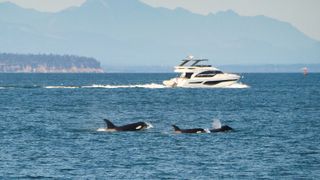
Orcas that have been terrorizing boats in southwest Europe since 2020 were recently spotted circling a vessel in Spain for the first time this year. The close encounter, which took place hundreds of miles from where the cetaceans should currently be, hints that this group is switching up its tactics — and scientists have no idea why.
The Iberian subpopulation of orcas ( Orcinus orca ) is a small group of around 40 individuals that lives off the coast of Spain and Portugal, as well as in the Strait of Gibraltar — a narrow body of water between southern Spain and North Africa that separates the Atlantic Ocean and Mediterranean Sea.
Since 2020, individuals from this group have been approaching and occasionally attacking boats , sometimes causing serious damage to the vessels and even sinking them. The most recent sinking occurred on Oct. 31, 2023 , but the orcas have sent at least three other boats to the bottom of the sea . However, no humans have been injured or killed.
Related: Orcas are learning terrifying new behaviors. Are they getting smarter?
On April 10, three of these orcas were spotted persistently swimming near a large yacht off the coast of Malpica in Galicia, northern Spain, local news site Diario de Pontevedra reported . The trio did not attack the vessel, but local conservation group Orca Ibérica GTOA, which has been closely monitoring the Iberian subpopulation, warned boaters to "take caution when passing through" the area.
The encounter was surprising as the orcas don't normally venture this far north until mid to late summer, Spanish science news site gCiencia reported .
"Theoretically, they are in the Strait [of Gibraltar] in the spring and should reach the north [of Spain] at the end of the summer," Alfredo López Fernandez , a biologist at the University of Aveiro in Portugal and representative of the Atlantic Orca Working Group, told gCiencia in the translated article. "There is an absolute lack of knowledge" about why this is happening, he added.
Sign up for the Live Science daily newsletter now
Get the world’s most fascinating discoveries delivered straight to your inbox.
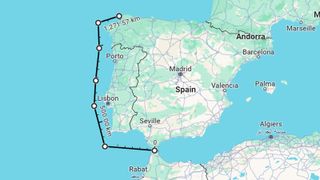
Other orcas have also been spotted further east along the Spanish coastline toward Biscay and further south in Portuguese waters over the last few weeks, gCiencia reported. The orcas normally only enter these areas to follow tuna, their preferred prey. It is unclear if the tuna have arrived early this year.
So far, the orcas have not attacked any boats. But López Fernandez believes this could start within the next few months. However, he says it is hard to predict when and where these encounters will occur.
Scientists still don't know exactly why these attacks started. Some researchers believe that the first attacks may have been perpetrated by a lone female named "White Gladis," who may have been pregnant when she started harassing the boats . But regardless of how it started, the behavior quickly spread among the group.
So far, at least 16 different individuals have attacked boats. Eyewitnesses also claim to have seen orcas teaching other individuals how to attack boats, with an emphasis on attacking vessels' rudders to immobilize them.
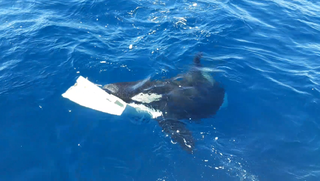
There is also a suggestion that the behavior may have spread outside the population after a boat in Scotland was attacked by a different group in June 2023. However, it is impossible to prove this attack was connected to the others.
— 11 ways orcas show their terrifying intelligence
— How often do orcas attack humans?
— How orcas gained their 'killer' reputation
As the number of attacks has increased, boat owners have started using firecrackers and even guns to scare off the orcas, gCiencia reported. However, scientists like López Fernandez have urged for restraint because the subpopulation is "in danger of extinction."
"We want to transmit real and truthful information," López Fernandez said. "We're not going to hide that the orcas can touch the boats and sometimes break something, but we also have to be aware that what we have in front of us is not a monster."

Harry is a U.K.-based senior staff writer at Live Science. He studied marine biology at the University of Exeter before training to become a journalist. He covers a wide range of topics including space exploration, planetary science, space weather, climate change, animal behavior, evolution and paleontology. His feature on the upcoming solar maximum was shortlisted in the "top scoop" category at the National Council for the Training of Journalists (NCTJ) Awards for Excellence in 2023.
Orca calf refuses to leave a lagoon where its mother stranded and died off Vancouver Island
Brutal footage shows orca mom and son team up to drown another pod's calf
Haunting photo of Earth and moon snapped by China's experimental lunar satellites
Most Popular
- 2 Giant, 82-foot lizard fish discovered on UK beach could be largest marine reptile ever found
- 3 Global 'time signals' subtly shifted as the total solar eclipse reshaped Earth's upper atmosphere, new data shows
- 4 Enormous dinosaur dubbed Shiva 'The Destroyer' is one of the biggest ever discovered
- 5 Scientists may have pinpointed the true origin of the Hope Diamond and other pristine gemstones
- 2 'Uncharted territory': El Niño to flip to La Niña in what could be the hottest year on record
- 3 Rare 'porcelain gallbladder' found in 100-year-old unmarked grave at Mississippi mental asylum cemetery
- 4 NASA reveals 'glass-smooth lake of cooling lava' on surface of Jupiter's moon Io
- 5 'We were in disbelief': Antarctica is behaving in a way we've never seen before. Can it recover?
- Entertainment
- Sports Sports Betting Podcasts Better Planet Vault Mightier Autos Newsletters Unconventional Vantage Experts Voices
- Subscribe for $1
- Sports Betting
- Better Planet
- Newsletters
- Unconventional
Scientists Say They Know Why Killer Whales Are Attacking Boats Off the Coast of Spain
Scientists have said they believe they know why killer whales started attacking boats off Spanish coast. Having assessed footage of some of the attacks, researchers said they were carried out by two or three young animals.
They noticed two of the killer whales were seriously injured—which may have prompted their behavior. Speaking to Spanish daily newspaper El Pais , researchers say it is unclear whether the killer whales, also known as orcas, were injured before or during their encounters with the boats, but that the killer whales may have felt threatened.
Alfredo López, a biology professor at the Coordinator for the Study of Marine Mammals (CEMMA), told the newspaper: "It's not revenge. They're just acting out as a precautionary measure." He said the killer whales did not appear to have a premeditated plan to cause damage to the boats, "even if eventually damage is done."
"Our interpretation is that they don't have the slightest intention of attacking people."
- 'Monster' Great White Shark Gets Surrounded by Pod of Killer Whales
- Killer Whales 'Ripped Open' Great White Sharks, Ate Liver, Heart and Testes
- Mom Screams as Killer Whale Spotted Below Daughter, 6, Water Skiing
News reports of orcas attacking boats off the coast of Spain emerged at the start of September, with encounters having started as early as July. Sailors were reporting orcas ramming their boats and yachts. One Spanish naval yacht lost part of its rudder after several orcas attacked it.
In an interview with the BBC, a Scottish yacht owner Graeme Walker, whose vessel was attacked for 45 minutes early on September 22, described his encounter with three orcas: "The boat would literally spin through 90 degrees when the animals came in. It was as pronounced as that. When they actually bit on the rudder and started shaking the rudder the wheel was spinning from side to side. You could not have touched it. You would have broken your arms."
That same day, Spain's Ministry of Transport, Mobility and Urban Agenda announced sailing vessels that were 49 feet or less were banned from sailing between Cabo Prioriño Grande and Punta de Estaca de Bares, where the killer whale attacks had taken place. This was as a preventative measure to protect people on board and the killer whales.
"Interactions with killer whales have affected, above all, medium-sized sailboats, with a length equal to or less than 15 meters (49 feet)," a statement from the ministry said. "All the encounters with the killer whales took place between 2 and 8 nautical miles from the coast and the sailing speed ranged between 5 and 9 knots, either exclusively under sail or sail and motor."
Justin Crowther, a British sailor whose yacht was attacked and had to be rescued, told El Pais that after docking he realized how close the orcas had come to overturning the boat. "I have sailed in Australia, Tahiti, Canada... all over the world, and I had seen orcas, but none had ever gotten this close," he told the newspaper.
López says that while this increase in killer whales attacking boats seems extreme, the encounters are still relatively rare. He said only 20 percent of orca sightings from yachts had reported damage or trouble. "It might sound as if all the boats are being damaged, but that is not the case," he said.

Uncommon Knowledge
Newsweek is committed to challenging conventional wisdom and finding connections in the search for common ground.
About the writer
Hannah Osborne is Nesweek's Science Editor, based in London, UK. Hannah joined Newsweek in 2017 from IBTimes UK. She is a graduate of Goldsmiths University and King's College London. Languages; English.
You can get in touch with Hannah by emailing [email protected]
To read how Newsweek uses AI as a newsroom tool, Click here.

- Newsweek magazine delivered to your door
- Newsweek Voices: Diverse audio opinions
- Enjoy ad-free browsing on Newsweek.com
- Comment on articles
- Newsweek app updates on-the-go

Top stories

Trump Witness Tried to Warn Him About Mar-a-Lago Indictment

Republican Infighting Is Getting Uglier

Iran Unveils New Weapon Capable of Taking Out America's Stealth Jets

Jewish Professor Says Columbia Barred Him From Campus

Violinist tries to serenade trapped B.C. orca calf to freedom
Efforts to free the calf, trapped for nearly 1 month in vancouver island lagoon, have been unsuccessful.

Social Sharing
Carol Love watches the tides at a Vancouver Island lagoon, and when the time is right, she starts to play her violin.
She plays for an audience of one, a killer whale calf that has been trapped alone in the lagoon for almost a month.
Preparations for more conventional efforts to save the whale continue, involving a large fishing net.
But Love, from Nanaimo, B.C., stands and plays on a bridge at high tide, hoping her music entices the young orca to swim through a narrow channel, under the bridge and into the open ocean to freedom — no net required.
- B.C. village rallies around effort to rescue killer whale calf
"She was curious," Love said Thursday after an afternoon recital for the female orca, named kwiisahi?is, or Brave Little Hunter, by the Ehattesaht First Nation.
"It came closer to me," she said. "It absolutely did. I'm glad I got to see her today, especially if they are going to get her out."
Love, a Canadian military veteran, said her first visit to the bridge Wednesday night didn't work, but she did see the orca calf rise to the surface in the distance.
"A lot of my violin notes sound like orcas, so hopefully she'd resonate with some of my sound and coax [herself] underneath and out to the ocean," she said. "Every high tide I'll be on this bridge playing for her."

Love isn't the only one working to free the whale from the lagoon near Zeballos, 450 kilometres northwest of Victoria, where it has been alone since its pregnant mother became stranded on a rocky beach at low tide and died.
A rescue team continues to prepare to catch the killer whale calf in a net and transport it to the nearby ocean.
Ehattesaht First Nation Chief Simon John would not confirm the exact timing of the next rescue attempt in an interview on Thursday, other than to say, "it is going to happen eventually."
An attempt last Friday involved more than 50 people using boats, nets, and drones. But they were unable to corral the young orca to a shallow area of the lagoon where they planned to manoeuvre it into a sling, lift it onto a truck, then take it on a barge out to sea for a potential reunion with its pod.
- Rescuers pause efforts to free trapped orca calf
More rescue equipment has been arriving over the past few days, including a large seine netting boat from Campbell River's Homalco First Nation.
Road access to the planned rescue site at the shallow end of the Little Espinosa Inlet lagoon was blocked Thursday afternoon, with a sign saying: "Active work site, no unauthorized access permitted."
John said the Ehattesaht First Nation is committed to the whale's rescue.
"We need to save it," he said. "We're all family in our community and family matters, and family matters to the whale that we are trying to help and get her to her pod. It's very important."

Love was doing her bit by playing her violin along to a recording of her favourite song, Tennessee Whiskey by country singer Chris Stapleton.
"Everything's been tried and you have to think outside the box," Love said.
"I'm out of my skin with joy," she said, getting "goose pimples" at the prospect of successfully luring the whale with her music. "I really would love it if it works."
With files from Nono Shen
Related Stories
- Top stories from British Columbia
- 19,000 homes are permanently listed as short-term rentals, B.C. government says
- Handwritten contract for home sale is legally binding: B.C. court
- Police warn of high-risk sex offender now living in Vancouver
"The exclusive distributor of ZVEZDA's production outside the former USSR is ITALERI SpA (Italy). Please turn to the sales organization of ITALERI SpA - HOBBY PRO GmbH. There you can make an order and get all information you need.
E-mail: [email protected] Fax: +43 316 323 119
Time in Lobnya , Moscow Oblast, Russia now
- Tokyo 12:16PM
- Beijing 11:16AM
- Kyiv 06:16AM
- Paris 05:16AM
- London 04:16AM
- New York 11:16PM
- Los Angeles 08:16PM
Time zone info for Lobnya
- The time in Lobnya is 8 hours ahead of the time in New York when New York is on standard time, and 7 hours ahead of the time in New York when New York is on daylight saving time.
- Lobnya does not change between summer time and winter time.
- The IANA time zone identifier for Lobnya is Europe/Moscow.
Time difference from Lobnya
Sunrise, sunset, day length and solar time for lobnya.
- Sunrise: 05:01AM
- Sunset: 07:56PM
- Day length: 14h 54m
- Solar noon: 12:28PM
- The current local time in Lobnya is 28 minutes ahead of apparent solar time.
Lobnya on the map
- Location: Moscow Oblast, Russia
- Latitude: 56.027. Longitude: 37.468
- Population: 62,000
Find best places to eat in Lobnya
- Best pizza restaurants in Lobnya
- Best restaurants with desserts in Lobnya
- Best breakfast restaurants in Lobnya
The 50 largest cities in Russia
Recommended
- Click to share on Facebook (Opens in new window)
- Click to share on Twitter (Opens in new window)
- Click to email a link to a friend (Opens in new window)
- Click to copy URL
Taylor Swift fans spy stylish nod to Jason Kelce in ‘Tortured Poets Department’ album shoot: ‘What did you do’
- View Author Archive
- Email the Author
- Follow on Twitter
- Get author RSS feed
Contact The Author
Thanks for contacting us. We've received your submission.
Thanks for contacting us. We've received your submission.

There’s no tiptoeing around this connection.
Taylor Swift dropped her new album, “The Tortured Poets Department,” on Friday, unleashing a whopping 31 songs along with fresh album art that embodies her sultry yet scholastic new style era .
But fans couldn’t help but zero in on one particular pair of shoes featured in the moody black-and-white snaps: a set of simple black thong sandals reminiscent of Jason Kelce’s favorite casual footwear .
“Jason is gonna be flabbergasted when he finds out where his favourite [sic] pair of Flipflops [sic] went,” one posted on X (formerly Twitter), while another joked, “oh no what did you do @JasonKelce?!”

Jason — whose younger brother, Travis, has been dating Swift since last summer — promptly liked the latter post, sending Swifties into a tailspin.
Of course, judging by the fact that Swift’s been gravitating toward quiet luxury labels like The Row, Saint Laurent and Khaite while promoting her latest project, it’s likely her sandals are a splurge compared to the former Philadelphia Eagles center’s.
Kelce lives in his beloved Olukai flip-flops ($130), which he’s raved about on his “New Heights” podcast with Travis.
JASON KELCE LIKED MY TWEET IM AKAHAKAHAKAKAHAKAK pic.twitter.com/1X36RU5rDO — haleigh (@swifts_latte) April 21, 2024
Olukai Mea Ola Men’s Leather Sandals

“These are really quality sandals,” Jason told his brother during a past episode. “They still offer arch support in them so it’s not just a piece of flat foam. It feels good, and I think they kind of look nice.”
Added the retired NFL pro, “If it’s functional, high quality and it looks good, I’m all for it.”
Meanwhile, a Saint Laurent pair similar to Swift’s will set you back $745 , while The Row’s flip-flops retail for closer to $900 .
Share this article:
- Holiday Rentals
- Restaurants
- Things to do
- Dolgoprudny Tourism
- Dolgoprudny Hotels
- Bed and Breakfast Dolgoprudny
- Dolgoprudny Holiday Rentals
- Flights to Dolgoprudny
- Dolgoprudny Restaurants
- Dolgoprudny Attractions
- Dolgoprudny Travel Forum
- Dolgoprudny Photos
- Dolgoprudny Map
- All Dolgoprudny Hotels
- Dolgoprudny Hotel Deals
- Dolgoprudny Hostels
- Dolgoprudny Resorts
- Hotels near St. George Church
- Hotels near Sculpture "Cinderella"
- Hotels near City Culture and Leisure Park
- Hotels near Church of the Saviour in the Holy Face
- Hotels near Temple of Lord's Transformation
- Hotels near Novyye Vodniki Park
- Hotels near Dolgoprudny Historical Art Museum
- Hotels near Park of Culture and Leisure
- Hotels near Monument to the Creators of Rocket Technology
- Hotels near Temple of the Icon of Our Lady the Perishing
- Hotels near (ZIA) Zhukovsky International Airport
- Hotels near (VKO) Vnukovo Airport
- Hotels near (DME) Domodedovo Airport
- Bahia Principe Fantasia Tenerife
- Best Tenerife
- Aluasoul Mallorca Resort
- Butlin's Skegness Resort
- Holiday Village Majorca - Protur Monte Safari
- Princess Andriana Resort & Spa
- Hotel Riu Karamboa
- Liberty Fabay
- GF Gran Costa Adeje
- Beach Resort Milatos Crete
- Akra Fethiye Tui Blue Sensatori
- Center Parcs Whinfell Forest
- Mareblue Beach Resort
- Butlin's Minehead Resort
- Cook's Club Corfu Adults Only
- Popular All-Inclusive Resorts
- Popular Beach Resorts
- Popular Family Resorts
- Popular All-Inclusive Hotels
- Popular Hotels With Waterparks
- Popular Honeymoon Resorts
- Popular Luxury Resorts
- Popular All-Inclusive Family Resorts
- Popular Golf Resorts
- Popular Spa Resorts
- Popular Cheap Resorts
- All Dolgoprudny Restaurants
- Restaurants near MOREMAN Restaurant at Avrora Yacht Club
- BBQ Restaurants in Dolgoprudny
- Cafes for Lunch in Dolgoprudny
- Cafés in Dolgoprudny
- European Restaurants for Large Groups in Dolgoprudny
- Italian Restaurants in Dolgoprudny
- Japanese Restaurants for Families in Dolgoprudny
- Japanese Restaurants in Dolgoprudny
- Pizza in Dolgoprudny
- Russian Restaurants in Dolgoprudny
- Seafood Restaurants in Dolgoprudny
- Sushi in Dolgoprudny
- Vegan Restaurants in Dolgoprudny
- Vegetarian Restaurants in Dolgoprudny
- Best Hamburgers in Dolgoprudny
- Breakfast Restaurants in Dolgoprudny
- Coffee & Tea in Dolgoprudny
- Restaurants with Outdoor Seating in Dolgoprudny
- GreenLeaders
- Dolgoprudny
- Things to Do
- Travel Stories
- Add a Place
- Travel Forum
- Travellers' Choice
- Help Centre
- Europe
- Russia
- Central Russia
- Moscow Oblast
- Dolgoprudny
- Dolgoprudny Restaurants
MOREMAN Restaurant at Avrora Yacht Club
Ratings and reviews, location and contact.
There is varied menu: raw bar with good sea-urchins, hot and cold starters, main dishes and desserts. Good cocktails and wine card. There is a big terrace. This club is located near the water (it’s obvious:) ), but the view is a partly industrial -... there is construction on the opposite bank and this ruins the view. This restaurant is spacious and it suits for different events. More

MOREMAN RESTAURANT AT AVRORA YACHT CLUB, Dolgoprudny - Restaurant Reviews, Photos & Phone Number - Tripadvisor

IMAGES
VIDEO
COMMENTS
On June 19 an orca rammed a 7-ton yacht multiple times off the Shetland Islands in Scotland, according to an account from retired Dutch physicist Dr. Wim Rutten in the Guardian. "Killer whales are ...
The most recent encounter occurred on May 4 off the coast of Spain. Three orcas struck the rudder and side of a sailing yacht, causing it to eventually sink, as was reported earlier this month in ...
Recent boat attacks might be driven by trauma. Killer whales are pictured during a storm in the fjord of Skjervoy in 2021 off the coast of northern Norway. Researchers say orcas are stepping up ...
An unusually large group of killer whales was spotted off the coast of San Francisco on May 7. (Michael Pierson / Oceanic Society) The attacks started suddenly and inexplicably in the spring of ...
A trio of orcas attacked a boat in the Strait of Gibraltar earlier this month, damaging it so badly that it sank soon afterward. The May 4 incident was the third time killer whales (Orcinus orca ...
Orcas Sank 3 Boats in Southern Europe in the Last Year, Scientists Say. A small group of orcas is ramming into sailboats in waters off the Iberian Peninsula. Researchers say they do not know what ...
Theory No. 2: The orcas want vengeance. Orcas off the Iberian Coast like to follow fishing vessels to snag bluefin tuna before fishermen can reel them in, putting the aquatic mammals at risk of ...
0:56. A sailboat off the coast of southern Spain was recently attacked by a group of orcas that repeatedly rammed the vessel, breaking its rudder and rupturing the hull. The crew called for help ...
An orca seen near the boats of Moroccan fishermen in the Strait of Gibraltar in 2015. Credit... Patty Tse/Alamy Stock Photo. By Isabella Kwai. Published Nov. 7, 2023 Updated Nov. 15, 2023.
Why orcas are attacking boats in Spain. Orcas ( Orcinus orca) have sunk three boats off the Iberian coast of Europe, and the behaviour seems to be spreading. Biologists first noted the trend in ...
By Bryan Pietsch. May 21, 2023 at 7:46 a.m. EDT. An orca leaps out of the water near a whale-watching boat off Washington's San Juan Islands. (Elaine Thompson/AP) 3 min. A spate of encounters ...
Nov. 9, 2023, 5:23 AM PST. By Patrick Smith. A yacht sank after it was attacked by a pod of orcas for 45 minutes, a sailing company has said, marking the latest assault on a boat by the sea ...
Three orcas (Orcinus orca), also known as killer whales, struck the yacht on the night of May 4 in the Strait of Gibraltar, off the coast of Spain, and pierced the rudder."There were two smaller ...
A small group of orcas is causing a lot of damage to boats off the Iberian Peninsula. Last month, killer whales rammed a boat continuously for over an hour, ...
A pod of orcas has sunk a yacht in the Strait of Gibraltar. A pair of orcas swim off the west coast of Vancouver Island in 2018. For 45 minutes, the crew of the Grazie Mamma felt like they were ...
Orcas ramming boats near Spain no cause for concern in N.L. waters, says expert. Deborah Giles, the science and research director at conservation group Wild Orca, suspects the orcas are simply ...
Orcas that attack and sink boats in southwestern Europe have been spotted circling a vessel in Spain, hundreds of miles from where they should currently be. And scientists can't explain why.
Researchers in Spain say the recent orca attacks on boats were related to injuries sustained by the at least two of the whales. Stock image showing a pod of killer whales.
Carol Love plays Tennessee Whiskey on her violin Wednesday in an effort to try to lure a two-year-old orca calf out of a lagoon where its been for over three weeks at Zeballos, B.C. (The Canadian ...
Fax. +7 095 577 31 63. +7 095 578 67 76. Products. Plastic model kits: 1:72 scale. medieval (Russian, German) WWII (Russian, American and British WWII aircraft) Modern (Russian aircraft)
Sunrise, sunset, day length and solar time for Lobnya. Sunrise: 05:06AM. Sunset: 07:51PM. Day length: 14h 45m. Solar noon: 12:29PM. The current local time in Lobnya is 29 minutes ahead of apparent solar time.
Ukrainian military had 64 combat engagements with Russian forces near Terny and south-east to Vyyimka of Donetsk region, Ivanivske, Klischiyivka, Andriyivka of Donetsk region, Lastochkyne and Pervomayske of Donetsk region, Heorhiyivka, Pobyeda, Novomykhaylivka of Donetsk region, Robotyne of Zaporizhzhia region, at the east bank of Dnipro river in Kherson region, - General Staff of Armed Forces ...
Meanwhile, a Saint Laurent pair similar to Swift's will set you back $745, while The Row's flip-flops retail for closer to $900. Taylor Swift wears designer flip-flops in her "Tortured Poets ...
MOREMAN Restaurant at Avrora Yacht Club, Dolgoprudny: See 170 unbiased reviews of MOREMAN Restaurant at Avrora Yacht Club, rated 4.5 of 5 on Tripadvisor and ranked #2 of 56 restaurants in Dolgoprudny.